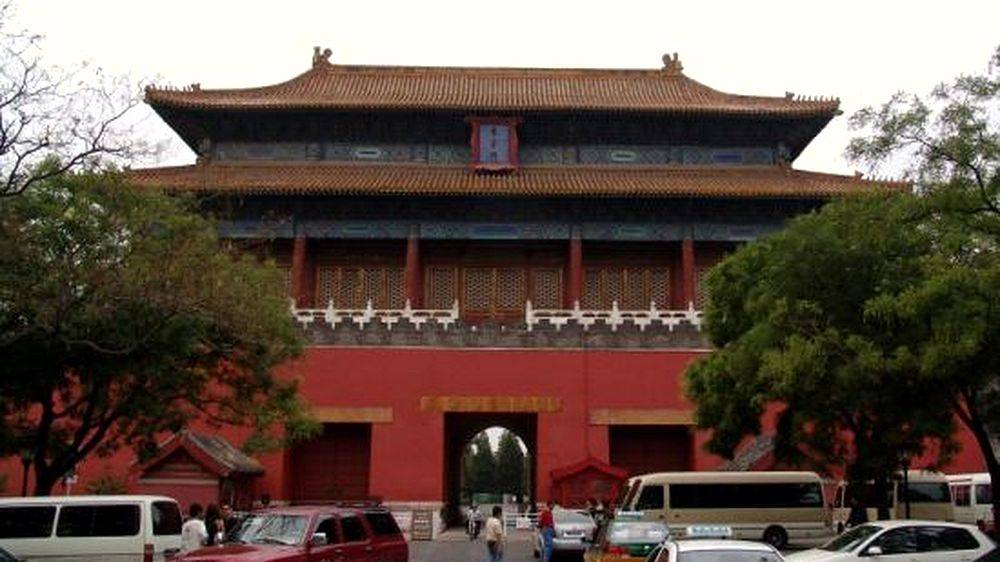Gate of Glory East (Donghuamen)

Gate of Glory East
Built in 1420, it is the eastern gateway to the Forbidden City and echoes the Gate of Western Flowering (Xihuamen). Both share the same structure, rectangular in shape. With its red platform, the door rests on a white marble base in a Buddhist style, building in which are pierced the three vaulted passages. On the platform is the square tower and its double roof surrounded by white marble columns. The tower is 5 arches wide and 3 deep with the offices around. The stele under the eaves bears the name of the door, written in Chinese "Donghuamen". Initially it was in three languages (Manchu, Mongolian and Chinese), then later Mongol was removed. Finally, the 1919 revolution will only retain Chinese. Since 1758, the 23rd year of Emperor Qianlong's reign (1736-1795), the tower has been used to store the military clothes that were worn during parades. At the beginning of the Qing Dynasty, only cabinet officials were allowed to pass through this door, whereas in the middle of the Qianlong reign, the senior and middle-aged ministers had this privilege. The coffins of the Qing emperors, empresses and regents were also allowed to pass, hence the name "Guimen" (the ghost gate). The door has 8 nails rather than the 9 of the other doors, it is due to the fact that the 9 is the figure of the Emperor and 8 that of the ghostly things.
See too:
Back to the list of the pavilions of the forbidden city





















